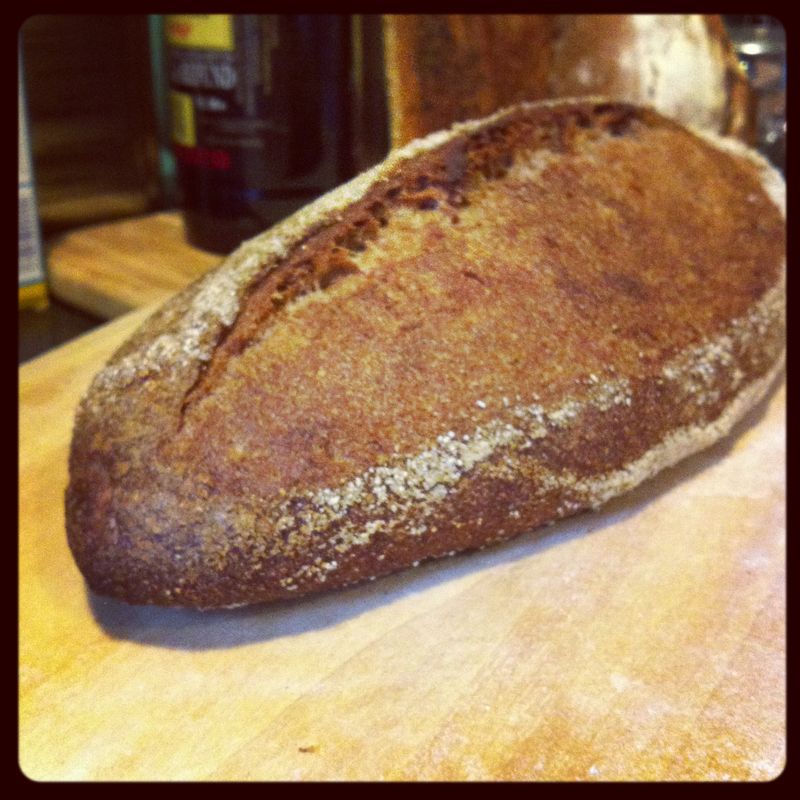The other day I got to chatting with baker Eli Colvin of Model bakery about whole grain doughs. He described a dough he was testing, a 100 percent whole wheat. It's a dough with a long autolyse, a poolish of whole wheat, a levain of whole wheat with a total hydration at 112 percent. Oh, yeah!
He explained that the whole wheat absorbs lots of water and the flour he's been using of late is stronger. With his formula in my head, I went ahead to experiment with some store bought King Arthur whole wheat flour. I did an overnight autolyse, made a poolish, and a small amount of levain, all with whole wheat. As he'd said his tests were a bit acidic, I adjusted some of the proportions of the ferment. In my poolish there was just a trace of yeast (barely a pinch), which was a total of 35 percent and 10 percent of levain with no added yeast to the final dough.
The high percentage of water in the autolyse scared me, but the flour absorbed it. Once mixed I gave the dough three folds to strengthen it. The crumb was nice, though I could of shaped the dough tighter, but I was happy with the crumb and flavor is sweet and grassy. Eli described the longer autolyse helps convert the starches to sugars which give better color as well flavor. I will be incorporating this idea with whole grains into my repertoire.









Jeremy, very nice crumb especially for a whole wheat. Peter Reinhart uses this long autolyse method in his Whole Grains Bread book.
So, long autolyse, more amylase activity = more sugars to be caramelized and more food for the yeasts. Love the science in baking.